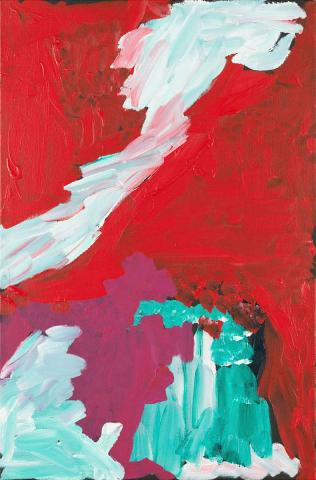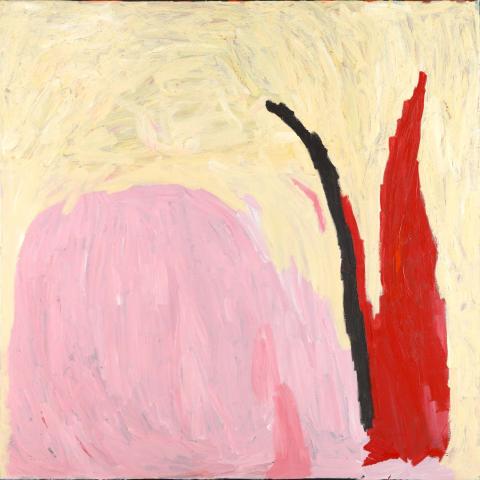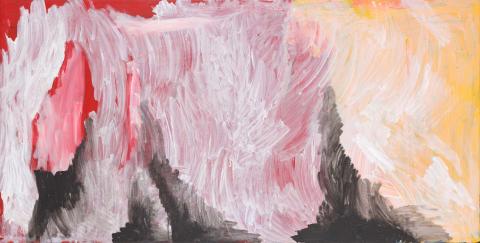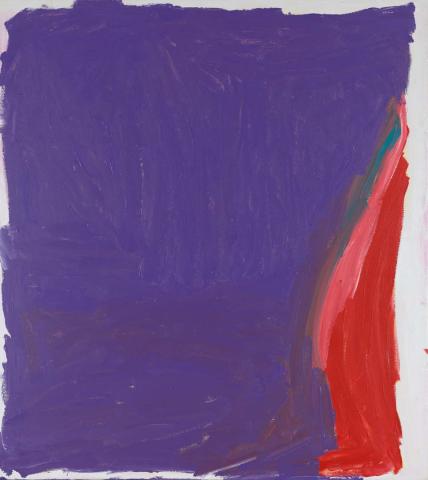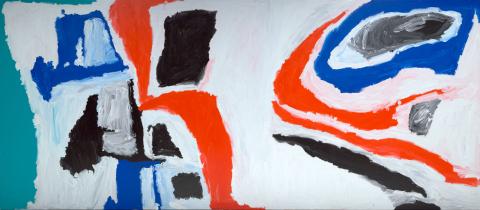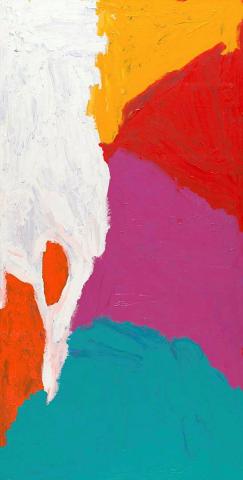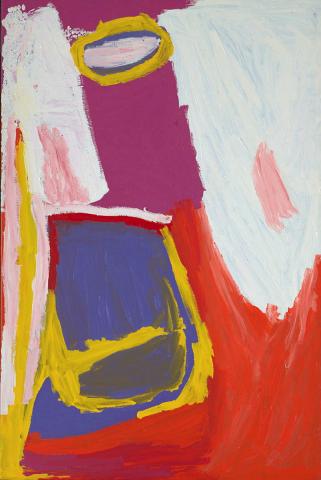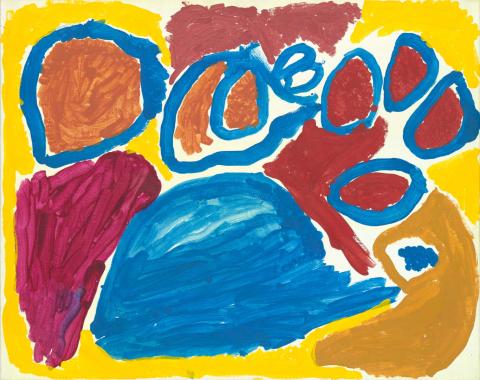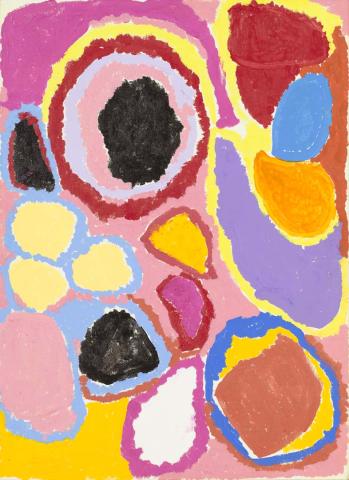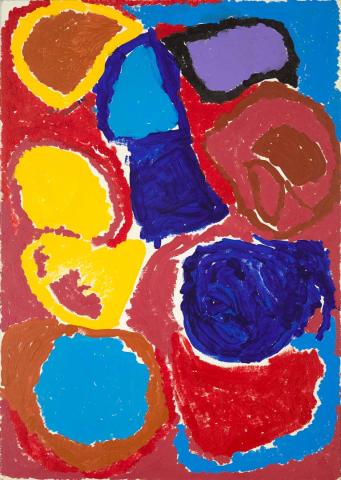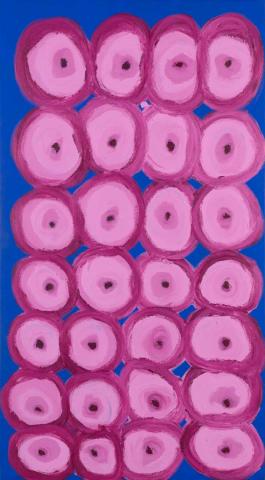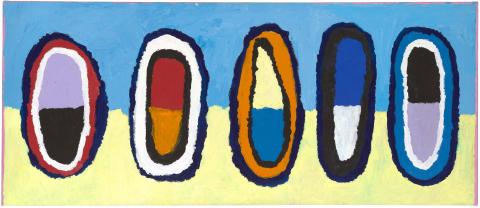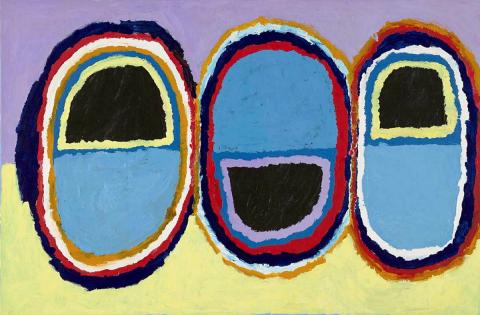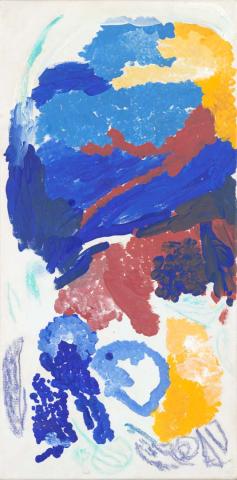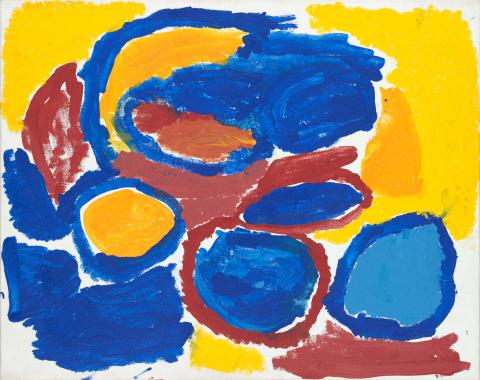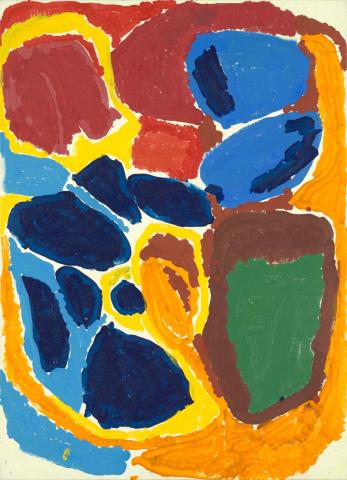GABORI, Mirdidingkingathi Juwarnda Sally
c.1924 - 2015
Mirdidingkingathi Juwarnda Sally Gabori was born by a small tidal creek around 1924 on the south side of Bentinck Island, of the South Wellesley Island Group in the Gulf of Carpentaria, Queensland. Her Kayardild language name, Mirdidingkingathi, means ’born at Mirdidingki’, her country on Bentinck Island, and Juwarnda means ’dolphin’, her totem.
Bentinck Island was likely first encountered by Europeans when in 1623 Jan Carstenszoon, commander of the ship Arnhem, sailed across the Gulf of Carpentaria after landing at Cape Keerweer, in Wik country on the western side of Cape York. It was also one of the first parts of the Gulf of Carpentaria surveyed in detail by the explorer Matthew Flinders in 1802. After Flinders’s brief encounter with these remote people, the Kaiadilt chose to remain self-contained, and continued to live apart from European people for the next 145 years.
Many of the customs and hunting implements described by Flinders are still in use today, including rafts, shell water vessels, fish nets and traps. There had also been intermittent documented contact with the people from Bentinck Island from 1901, including systematic efforts by Presbyterian Mission officers on Mornington Island from 1925 but, in the main, the Kaiadilt remained isolated and able to continue their traditional lifestyle.
In 1946 and 1947, severe drought affected the communities in the Gulf area and in 1948 Bentinck Island had great tidal waves or high tides. This culminated in a deterioration of the Kaiadilt homelands and eventually the missionaries transporting the entire population to the mission on Mornington Island. Mirdidingkingathi Juwarnda came to Mornington Island at this time with her husband, Kabararrjingathi Bulthuku, as one of his four wives. Although she was in her mid- to late teens at the time, because she was married, Mirdidingkingathi Juwardnda was not removed from her extended family and placed in the dormitory at Gununa, as many of her sisters and cousins were.
Soon after arriving, the missionaries gave new Anglicised names to all Kaiadilt people. Kabararrjingathi Bulthuku was renamed ’Pat Gabori’ – ’Gabori’ being the way the Missionaries transcribed ’Kabararrjingathi’ – with Mirdidingkingathi Juwarnda being named ’Sally’ and taking her husband's new surname ’Gabori’, as per Christian marriage tradition. Even though the Missionaries encouraged monogamy, Pat managed to maintain two wives, while his other wives were redistributed to wifeless men. In the 1980s the Kaiadilt people on Mornington began to re-establish themselves on their ancestral lands on Bentinck Island. However, the Mornington Island community of Gununa is still the major resource centre for these people today. Mrs Gabori began painting in 2005 at Mornington Island Art. Her immediate love of paint, and the full spectrum of colour offered to her, triggered an outpouring of ideas including depicting her country and her ancestral stories. Whilst her works could immediately be recognised as abstraction, her fascination with colour seems as significant as the content itself. At a closer look, the country, colour and mind's eye combine to impart to the viewer a real and intimate sense of who Mrs Gabori is, and where she is from. As a minority in the Lardil community on Mornington Island, Kaiadildt were often excluded or forgotten when previous painting and art movements occurred on the island. Gabori's tenacity has established a space for the women of her community to paint and has given this small community a voice through art.
In 2016 a retrospective exhibition of her work ’Mirdidingkingathi Juwarnda Sally Gabori: Dulka Wargiid – Land of All’ was held at the Queensland Art Gallery, celebrating the art and life of the artist. Gabori's works are held in the collections of the Musee du quai Branly, Paris, France, Yokohama Art Museum, Japan, the National Gallery of Australia, National Gallery of Victoria, Art Gallery of Western Australia, Art Gallery of New South Wales, Museum of Contemporary Art, Sydney, Auckland Art Gallery Toi o Tamaki, New Zealand, Museum of Contemporary Aboriginal Art Utrecht, the Netherlands, and numerous important private and corporate collections.
Bruce Johnson McLean
Creator details
External resources
View related library resources
